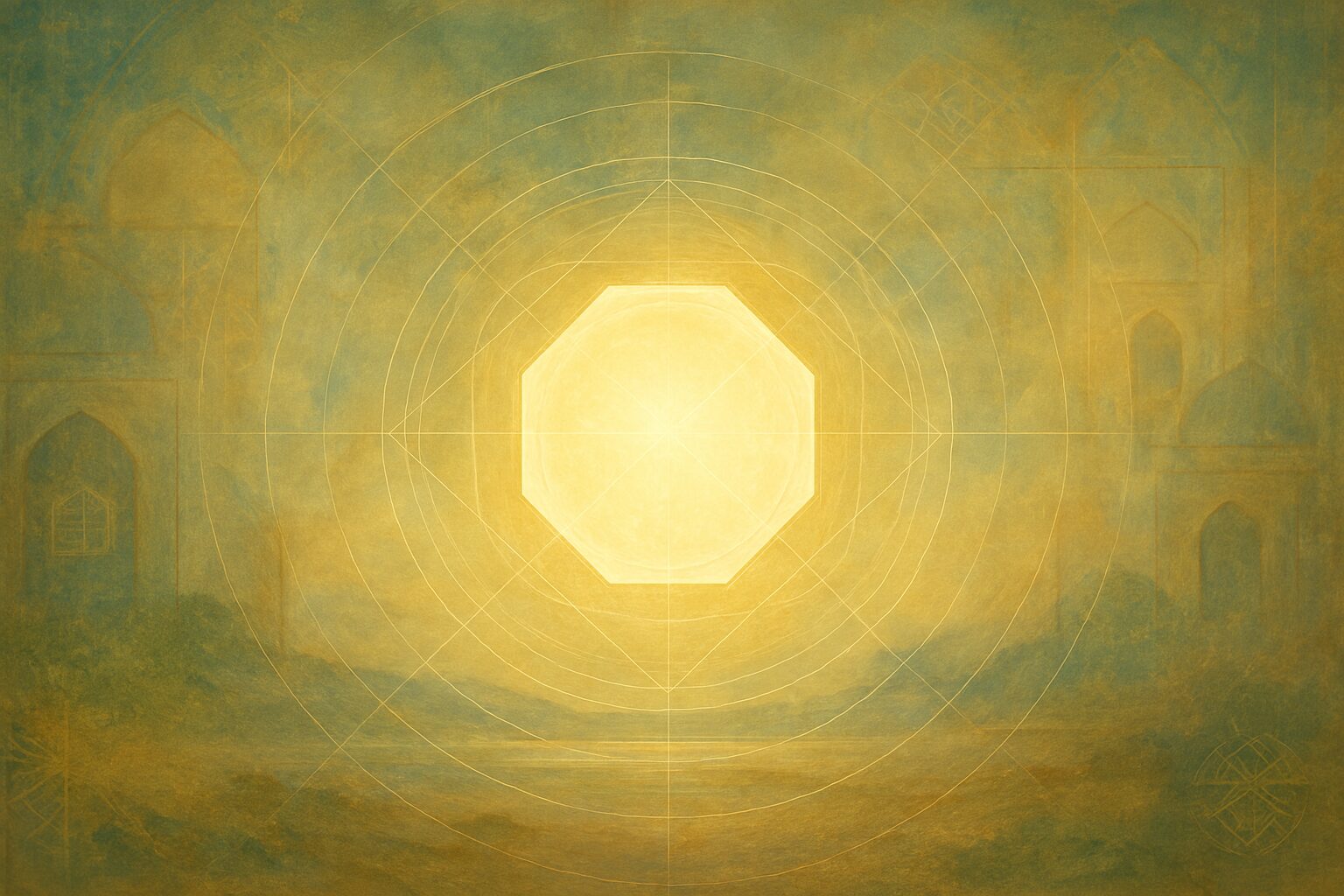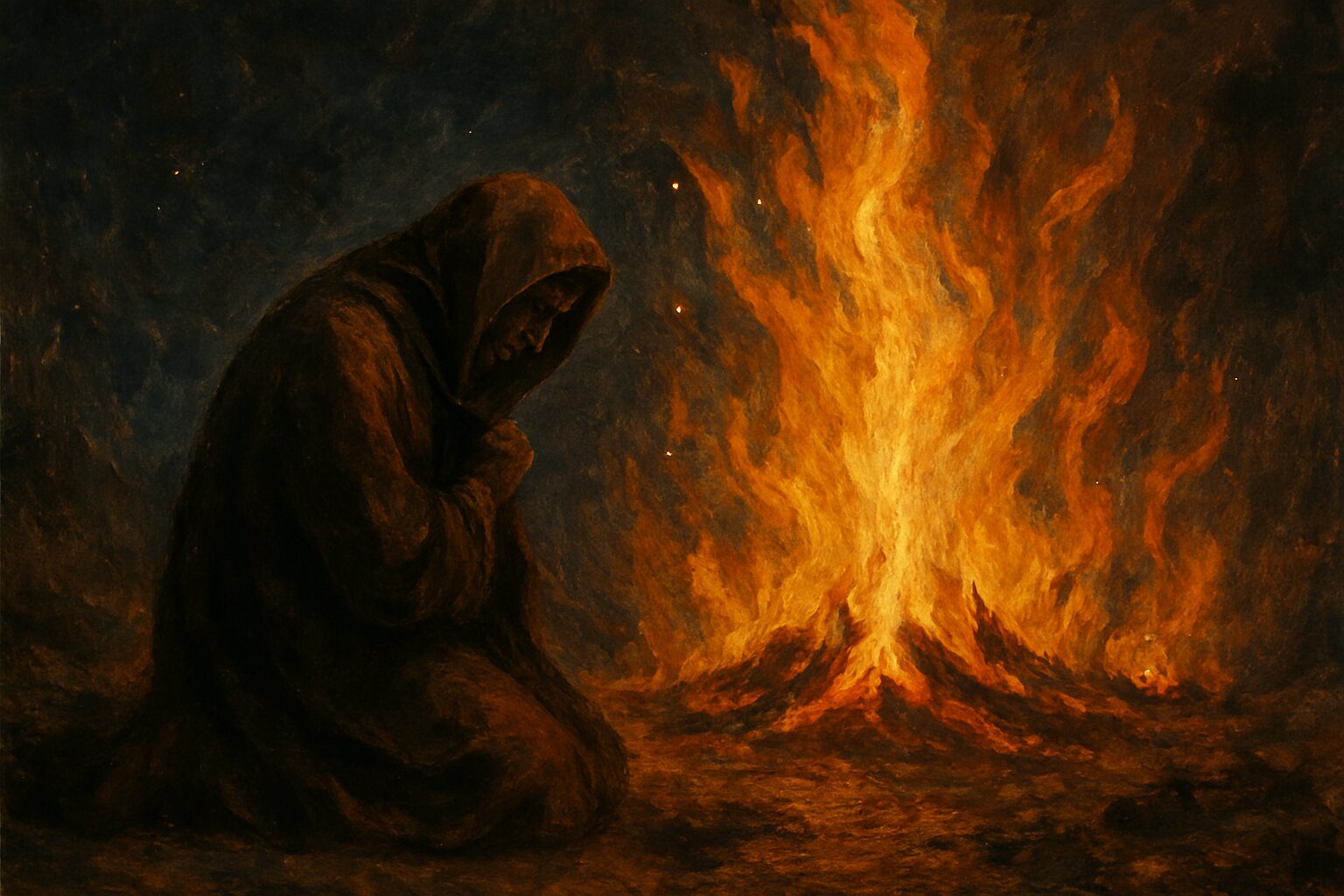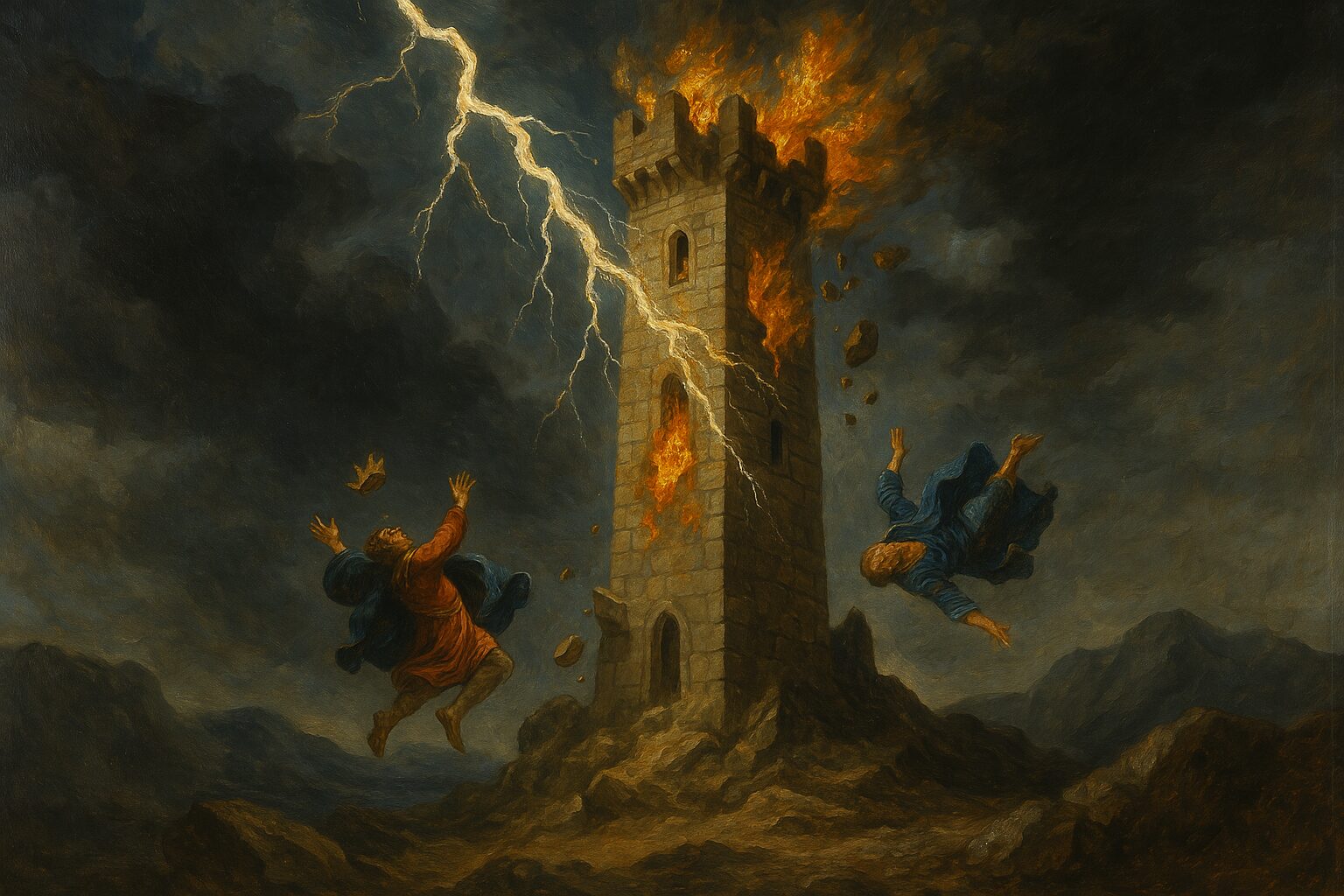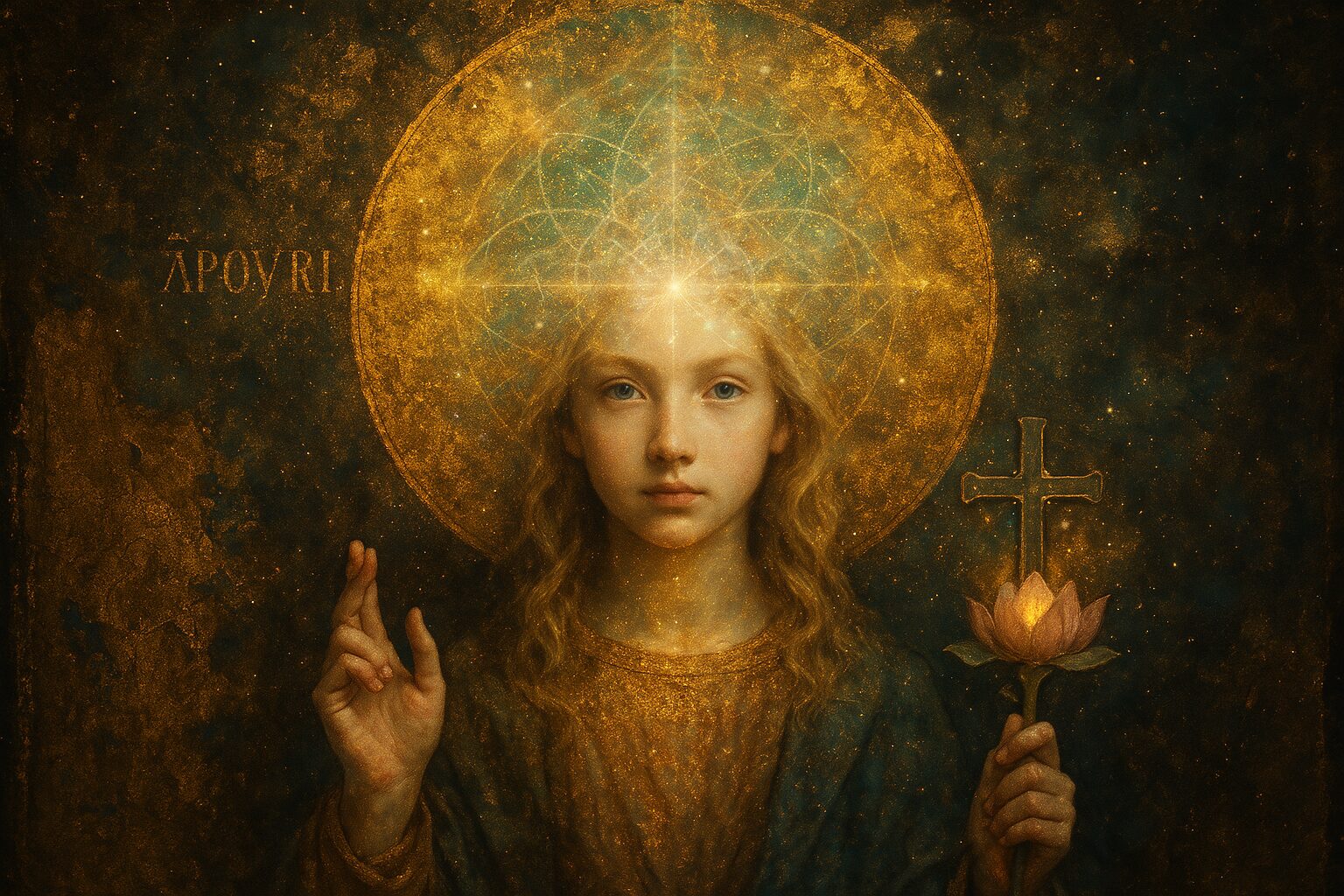Hidden in plain sight, the octagon is a shape of profound symbolic power—neither square nor circle, but something between. It emerges quietly in sacred architecture, Islamic mosaics, medieval baptisteries, Eastern temples, and even modern spiritual art. At first glance, it’s simple. But within its eight sides lies a secret geometry that whispers of balance, transformation, and the soul’s journey between worlds.
In this piece, we explore the esoteric significance of the octagon—a shape that unites heaven and earth, matter and spirit, form and flow.
A Bridge Between Worlds
The octagon is a liminal shape—an intermediary. The square represents the earthly realm: grounded, stable, and directional. The circle, by contrast, evokes the divine: eternal, infinite, and without edges. The octagon stands as a sacred mediator between the two, a symbolic bridge from the material to the spiritual.
This symbolism is not abstract. In early Christian architecture, baptisteries were often built in octagonal shapes, marking the threshold between the old life and the new. To be immersed in the waters of the eight-sided font was to undergo a symbolic death and rebirth—a passing from the profane to the sacred.
Eight as a Number of Regeneration
The number eight has long been associated with renewal and balance. In the Pythagorean tradition, it is the number of harmony and cosmic order. In Christianity, the eighth day is the day beyond time—symbolic of resurrection and eternal life. In Buddhism, the Eightfold Path is the road to spiritual liberation.
In a purely geometric sense, the octagon holds balance. It combines the straight lines of the square with a rotational motion that hints at the circle. In spiritual terms, this gives it the flavor of movement within stillness—a concept echoed in Taoist thought and sacred dance alike.
Sacred Spaces and the Octagonal Blueprint
The octagon appears across spiritual traditions and civilizations, often with similar intent: to mark a space as sacred, balanced, and transitional.
- In Islamic architecture, the Dome of the Rock in Jerusalem is one of the most prominent octagonal structures in the world. Its design reflects cosmic harmony and the threshold between earth and heaven.
- In Christian Europe, octagonal churches and baptisteries were intentionally used to signal the resurrection and the soul’s purification.
- In Eastern temples, such as in some Chinese and Tibetan designs, the Bagua—a spiritual diagram with eight trigrams—is often superimposed on architecture to create spiritual harmony and flow.
Whether in East or West, the octagon represents unfolding, balance, and the sacred geometry of the inner journey.
Inner Architecture: The Soul’s Octagon
What does this mean for the seeker?
The octagon is not just found in buildings—it can be mapped onto the soul itself. Imagine eight internal gates: integrity, courage, discipline, compassion, clarity, humility, devotion, and wisdom. These are not doctrines but doors—passages to be opened and harmonized.
To meditate on the octagon is to center oneself between extremes. Between light and dark. Between action and silence. Between ego and spirit. It invites us to sit, not in rigidity, but in poised balance—like a compass pointing in all directions at once, grounded yet open.
A Practical Octagonal Meditation
To engage with this symbol on a personal level, try this practice:
- Draw an octagon on paper or visualize it in your mind’s eye.
- Label each of the eight sides with a quality you seek to harmonize (e.g., truth, love, strength, etc.).
- Sit in silence, breathing gently, and move your awareness around the octagon, pausing at each side.
- Let insights rise naturally. Observe which sides feel stable and which feel neglected.
- Close by visualizing the shape glowing with soft light, integrating the whole.
This simple ritual turns a symbol into a mirror. The octagon becomes not just something you look at—but something you move through.
Geometry as Living Symbol
In a world dominated by linear thinking and digital abstractions, sacred geometry like the octagon calls us back to embodied symbolism. It reminds us that truth is not just spoken—it is shaped, lived, and moved through.
The octagon is a map of balance, a doorway between worlds, and a mirror of the soul.
Eight sides. One center. Infinite reflections.






